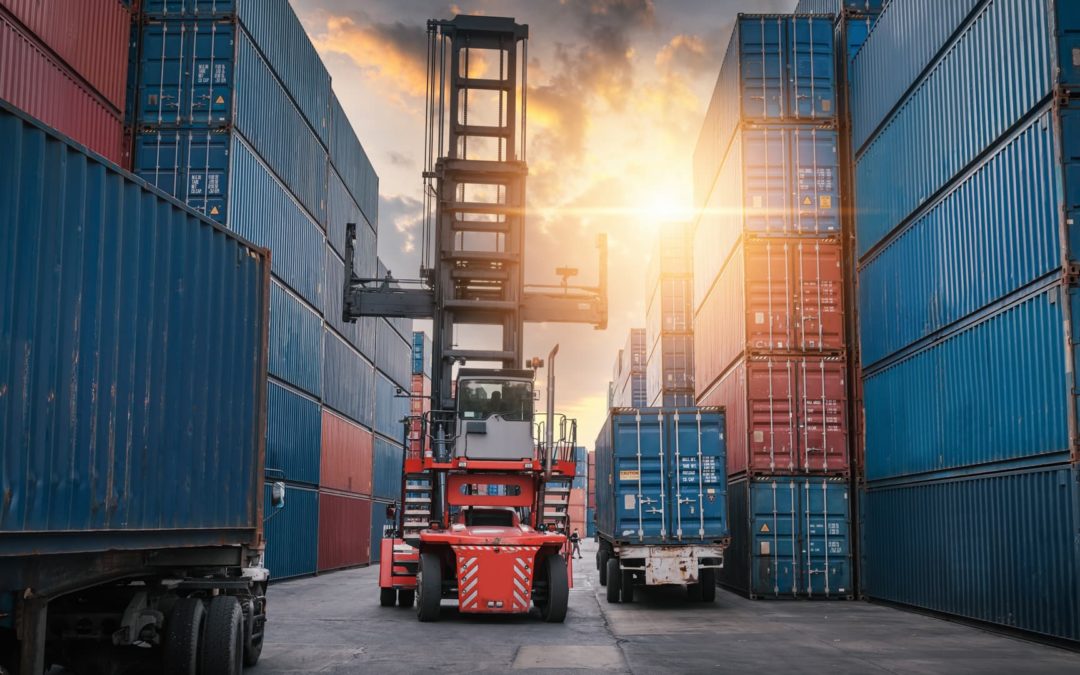This is part II of a two-part blog series that details the top supply chain visibility hurdles that shippers are facing right now and shows how a SaaS-based transportation management system provides the high levels of shipment visibility that companies need to overcome these challenges.
In a world where data is the new oil, using it to gain visibility and make good supply chain decisions has become table stakes for companies across most industries. By providing real-time status updates, sending out automated alerts, sharing tracking data with partners and customers, and using predictive analytics to support good decision making, transportation management systems (TMS) enable high levels of much-needed visibility in today’s business world.
“Hitting a moving target, especially when you cannot see it, is incredibly difficult,” said EY’s Jerry Gootee in a recent webcast. “Visibility allows enterprises to identify disruptions up and down the supply chain, and synchronize supply and demand both at the point of sale and at the required time of delivery,” EY reports in COVID-19: Why real-time visibility is a game changer for supply chains.
Equipped with better visibility, EY says supply chains can deliver anywhere from 20% to 25% cost savings and reductions in inventory while also improving overall service levels. Visibility also helps leading companies reduce risks and costs throughout the supply chain, it adds. For example, these companies can conduct scenario planning on how disruption will affect their suppliers – all the way through “tier N” suppliers (suppliers’ suppliers) – and proactively determine alternative sources and cost-effective approaches.
Right now, the global consultancy says reduced risks and costs are the top driver for companies that want to improve supply chain visibility. “This is one of the biggest issues we’re facing,” Gootee told the publication. “Clearly, risk assessment and monitoring of suppliers, including tier N suppliers, are [the] key benefits of visibility. [They’re] critical to de-risking
9 Ways TMS Supports Visibility
If gaining control over things that you can’t always “see” in the supply chain is a goal for 2021, here are nine different ways that IntelliTransTMS can help your company meet and even exceed these supply chain visibility goals:
- Contract management. Use your TMS to automate your contract processes and manage carrier contract terms and conditions online—anywhere, anytime.
- eRFQ & shipment rating. Manage your long- and short-term needs for rate negotiations with your carriers. This is a must-have in today’s fluctuating freight rate environment.
- Dynamic load planning. Don’t leave this up to chance or guesswork. Instead, let your TMS help you increase carrier capacity and consolidate shipments with dynamic load planning tools.
- Dispatch management. Manage by exception, use your TMS to enforce contracts tender loads, and use real-time communication to interact with your business partners. IntelliTransTMS’ unique expansive-tendering algorithm drives least-cost carrier utilization.
- Mobile application. Using it, carriers can easily schedule and respond to loads, send position updates, and provide delivery confirmations (available both in Google Play and the App Store).
- Invoice audit & payment. Eliminate paperwork and resolve discrepancies using your TMS’ automated invoice auditing tool. Having tendering, shipping, rating, and invoicing in a single platform improves auditing, reduces cost, and provides high levels of visibility across transactions.
- Order tracking. Using the TMS’ control tower, you can track shipments from the point of order entry all the way through to payment—and all steps in between—and gain unprecedented levels of shipment visibility across the supply chain.
- Dock scheduling. Don’t let your dock or yard become the “black hole” of your end-to-end supply chain. With IntelliTransTMS, you can give carriers self-service facility scheduling that supports improved customer and carrier relationships.
- All the analytics you could ever need. From scheduled reports to interactive data visualizations, your TMS should give you the tools and data-driven alerts to ask deeper questions and deliver more meaningful insights.
If your TMS isn’t delivering in each of these nine different areas, and if you’re coming up short on visibility in any area of your supply chain, now is the time to reassess your systems and adopt a platform that provides real-time insights and data that you can use to work smarter, better, and faster in today’s unpredictable business environment.
.jpg)
IntelliTransTMS is the only SaaS-based TMS that provides shipment execution and visibility across rail, truck, intermodal, barge, and ocean shipments. Whether you ship hundreds or thousands of loads a month, lowering distribution costs helps improve your bottom line. IntelliTransTMS reduces labor-intensive, time-consuming and error-prone business processes. From shipment visibility to invoice auditing and analytics, you have everything you need whenever and wherever you need it.
IntelliTrans’ Global Control Tower provides high levels of supply chain transparency; aggregates, completes, and enhances data from a variety of sources; offers visibility into and execution of different aspects of the supply chain; and generates data-driven alerts and analytics that ask deeper questions and deliver meaningful insights. By leveraging tracking information, the Global Control Tower provides analytics that measures key performance indicators (KPIs) like fleet cycle time, origin/destination dwell time, lane and hauler performance, back orders, freight spend, load optimization, and more. With their rate, equipment, lease, tracking, and invoice data in a central repository that’s accessible 24/7, companies can position themselves for success in any market conditions.

